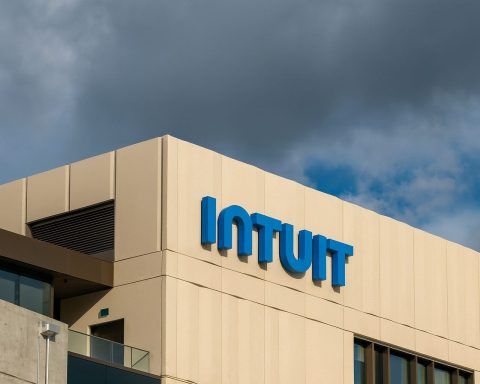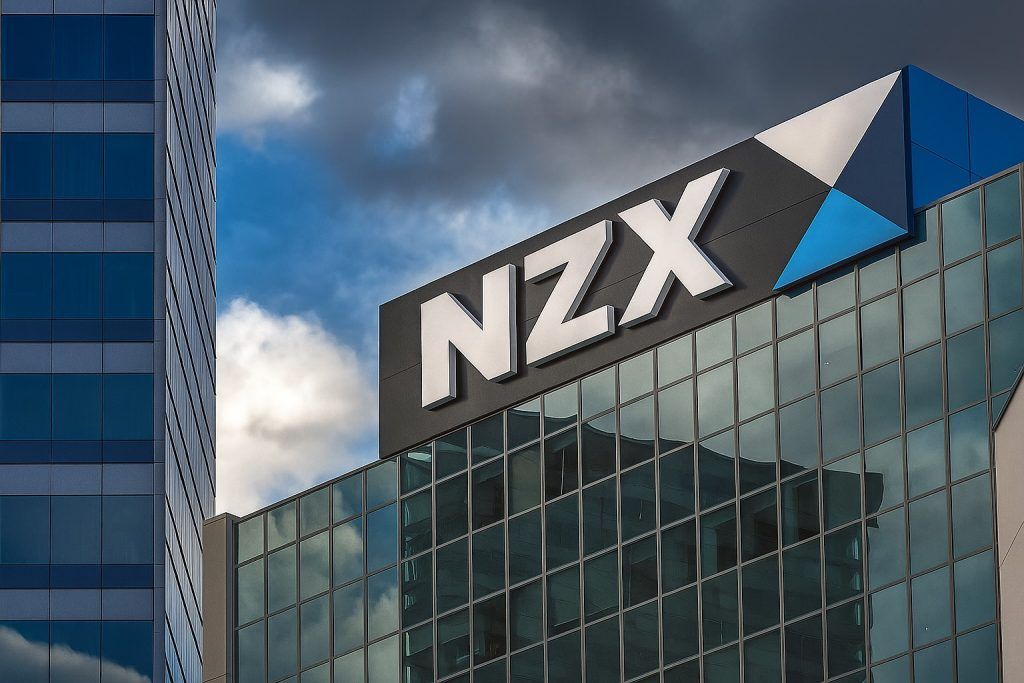Chinese equities finished Thursday, November 20, 2025, on the back foot, with broad benchmarks edging lower even as property developers and brokerages surged on fresh policy signals.
The Shanghai Composite Index fell 0.4% to 3,931.05, while the Shenzhen Component lost 0.76% to 12,980.82, leaving mainland stocks at roughly one‑month lows. [1]
The CSI 300 index of large Shanghai‑ and Shenzhen‑listed companies declined 0.51% to 4,564.95, its third drop in four sessions. [2]
In Hong Kong, the Hang Seng Index essentially went sideways, closing 0.02% higher at 25,835.57, while the Hang Seng China Enterprises Index (H‑shares) slipped 0.08% to 9,143.34 and the Hang Seng Tech Index fell about 0.6% to 5,574.59. [3]
The mixed finish came on a day when most Asian markets rallied sharply on Nvidia’s blockbuster earnings, but China stood out as a laggard, with investors rotating out of this year’s big winners in tech and new energy and into financials and property names. [4]
Market recap: From early gains to profit‑taking
At midday, Chinese stocks were solidly in the green: the CSI 300 was up around 0.3% and the Shanghai Composite about 0.4% as traders followed Wall Street’s tech rebound. [5]
By the close, that optimism had flipped:
- Shanghai Composite:
- Close: 3,931.05
- Change: −0.40% day‑on‑day [6]
- CSI 300:
- Close: 4,564.95
- Change: −0.51% [7]
- Shenzhen Component:
- Close: 12,980.82 (−0.76%) [8]
- Hang Seng Index (Hong Kong):
- Close: 25,835.57 (+0.02%, effectively flat) [9]
According to official and market data, Shanghai is still up around the mid‑teens percent year‑to‑date and recently traded above the 4,000‑point level for the first time in a decade, which has encouraged some investors to lock in profits after a strong autumn rally. [10]
Intraday, China’s moves diverged from the rest of Asia. While Japanese, Korean and Taiwanese benchmarks jumped between 2–3% on the back of Nvidia’s upbeat revenue outlook and bullish AI commentary, China’s CSI 300 reversed an early gain to end lower, and the Hang Seng underperformed regional peers despite finishing near flat. [11]
Property stimulus chatter ignites Chinese developers
The biggest story in China’s stock market today was real estate.
A Bloomberg report said Beijing is weighing a new nationwide property support package to arrest a four‑year housing slump that has left developers struggling and saddled banks with an estimated 3.5 trillion yuan (about $492 billion) in bad loans. [12]
According to that report and follow‑up coverage:
- Policymakers are considering:
- Mortgage subsidies for first‑time homebuyers
- Higher income‑tax rebates for mortgage borrowers
- Lower transaction costs (such as deed taxes and fees) to coax buyers back into the market [13]
The hint of such support was enough to set off a powerful rally in Chinese property stocks, particularly those listed in Hong Kong:
- Sunac China rallied about 11%
- China Vanke jumped roughly 6%
- Country Garden climbed more than 5%
- Evergrande Property Services added over 2%
- China Overseas Land & Investment advanced about 3.5%
- Longfor Group rose around 4% [14]
Onshore, the CSI 300 Real Estate Index gained a little over 2%, while a gauge of mainland developers in Hong Kong (the Hang Seng Mainland Properties Index) closed about 1.7% higher. [15]
The reaction underscores how sensitive the market remains to any sign of relief for the property sector, which has seen monthly home prices falling in the majority of large cities and remains a key drag on China’s broader growth outlook. [16]
Financials climb on CICC’s three‑way merger plan
Financial stocks were the other standout winners in China and Hong Kong today.
Shares in onshore brokerages rose as much as 2% after China International Capital Corp (CICC) — one of the country’s top investment banks — announced plans to acquire Dongxing Securities and Cinda Securities via share‑swap mergers. [17]
Key details from CICC’s deal:
- The combined group would become China’s fourth‑largest investment bank, with assets exceeding 1 trillion yuan (~$140 billion).
- The move is part of a state‑backed push to consolidate the crowded securities industry, which currently has around 150 firms. [18]
- Dongxing and Cinda are relatively strong in capital‑markets and retail brokerage, giving CICC broader geographic and business coverage. [19]
The CSI Bank Index also gained around 0.8%, with Bank of China up about 4%, supported both by the consolidation story and by confidence that bank margins are stabilizing as policy rates remain on hold. [20]
For global investors, the CICC deal is being read as a signal that Beijing wants larger, more competitive national champions in capital markets, a theme that could reshape valuations in China’s financial sector over the coming years.
Tech, AI and new energy: Nvidia boost fades quickly
Despite Nvidia’s blowout earnings lifting tech shares across Asia, China’s own technology and new‑energy heavyweights came under pressure.
- In Hong Kong, the Hang Seng Tech Index fell around 0.6%. [21]
- Major internet and platform names were mixed:
- Baidu rose about 2.4%
- Kuaishou Technology added roughly 2.3%
- Techtronic Industries surged more than 5%
- But Trip.com dropped about 3.6%, Xiaomi fell nearly 3.9%, Pop Mart slipped 2.5%, and NetEase declined around 1.4%. [22]
On the mainland, AI‑related and semiconductor stocks staged a classic “pop and fade”:
- Onshore AI shares opened higher but reversed to finish in the red, even after Nvidia’s CEO publicly dismissed fears of an AI bubble and guided for another quarter of strong growth.
- A mainland semiconductor sub‑index ended the day down around 1–1.5%. [23]
At the same time, new energy names took a notable hit:
- The Shanghai Composite’s decline was led by lithium and battery‑materials producers, with
- Tianqi Lithium down about 2%,
- Guangzhou Tinci Materials off roughly 1.2%,
- Ganfeng Lithium lower by about 1.9%, and
- Do‑Fluoride New Materials tumbling around 10%. [24]
- Contemporary Amperex Technology (CATL) slid about 3% onshore, as its Hong Kong‑listed shares dropped more than 6% following the expiry of a lock‑up, prompting heavy profit‑taking. [25]
The result: China’s stock market today saw a clear rotation away from high‑beta tech and green‑energy plays and toward financials, value and policy‑sensitive sectors such as property.
PBoC keeps loan prime rates on hold for a sixth month
Monetary policy was another key backdrop for trading.
The People’s Bank of China (PBoC) left its benchmark Loan Prime Rates (LPRs) unchanged for November, holding:
- 1‑year LPR:3.0%
- 5‑year LPR (key for mortgages):3.5%
This marked the sixth consecutive month without a change, in line with economists’ expectations. [26]
Analysts say the decision reflects:
- A less dovish stance after earlier aggressive easing and
- The view that bigger stimulus may now need to come from fiscal and structural policies, not further rate cuts, especially after a recent trade truce with the United States eased some external pressure. [27]
Separately, the PBoC announced plans to issue 45 billion yuan of central bank bills in Hong Kong next week — 30 billion yuan in three‑month paper and 15 billion yuan in one‑year bills — a move aimed at managing offshore liquidity and promoting use of the yuan in the city’s financial system. [28]
For markets, steady policy rates plus incremental liquidity operations helped support bank shares but did little to offset profit‑taking in overheated segments like AI and new energy.
Why property and financials are in focus now
Today’s moves are part of a bigger narrative running through China’s stock market in late 2025:
- Property remains the single biggest macro swing factor.
- New home prices have been falling in most major cities, with a recent report showing declines in 63 of 70 tracked urban areas and the sharpest nationwide price drop in nearly a year. [29]
- That slump has eroded household wealth, weighed on consumption and saddled banks with rising non‑performing loans. [30]
- Any sign of mortgage subsidies, tax breaks or lower transaction costs therefore has an outsized impact on property shares and related financials.
- Financial sector consolidation is accelerating.
- Authorities have long flagged the need to build several “world‑class investment banks” by 2035.
- The CICC‑Dongxing‑Cinda merger would create a 1 trillion‑yuan brokerage powerhouse, trailing only CITIC, Guotai Junan/Haitong and Huatai on size, and could pave the way for more deals across the $1.6 trillion securities industry. [31]
- Monetary policy is in “wait and see” mode.
- With the LPR pinned at record lows but loan demand still soft, the PBoC appears to be prioritizing financial stability and targeted tools over across‑the‑board rate cuts. [32]
Put together, today’s China stock market action suggests investors are:
- Rewarding sectors that benefit most directly from policy support (property, brokers, banks), and
- Trimming exposure to crowded trades in AI, semiconductors and new‑energy names, despite the global excitement around Nvidia and the wider AI boom.
What global investors should watch after today
For readers tracking Chinese equities from abroad, three themes from Thursday’s session stand out:
- How far Beijing will go on property stimulus
- Mortgage subsidies and tax breaks would directly support demand, but the scale and speed of the package remain unclear.
- Watch for concrete details and whether measures are nationwide or city‑specific, as that will influence which developers benefit most. [33]
- Follow‑through on brokerage consolidation
- If regulators approve the CICC deal relatively quickly, other state‑linked brokers may pursue tie‑ups, potentially reshaping earnings power and competition across the sector. [34]
- Signals from the PBoC and offshore yuan markets
- Stable LPRs plus more bill issuance in Hong Kong may keep rates anchored while nudging more activity into the offshore yuan market, which in turn can affect capital flows into Hong Kong‑listed Chinese stocks. [35]
For now, China’s stock market today looks less like a broad risk‑off episode and more like a sector‑rotation day: money is moving toward areas aligned with Beijing’s current priorities — stabilizing housing, strengthening financial institutions and maintaining monetary stability — even as some of this year’s high‑flyers finally take a breather.
References
1. english.news.cn, 2. www.investing.com, 3. english.news.cn, 4. www.reuters.com, 5. m.economictimes.com, 6. www.investing.com, 7. www.investing.com, 8. english.news.cn, 9. english.news.cn, 10. www.tradingview.com, 11. www.reuters.com, 12. www.bloomberg.com, 13. www.bloomberg.com, 14. www.investing.com, 15. www.tradingview.com, 16. www.reuters.com, 17. www.tradingview.com, 18. www.reuters.com, 19. finance.yahoo.com, 20. www.tradingview.com, 21. english.news.cn, 22. amp.scmp.com, 23. www.tradingview.com, 24. www.indopremier.com, 25. www.indopremier.com, 26. www.reuters.com, 27. www.reuters.com, 28. www.reuters.com, 29. www.reuters.com, 30. www.bloomberg.com, 31. www.reuters.com, 32. www.reuters.com, 33. www.bloomberg.com, 34. www.scmp.com, 35. www.reuters.com







